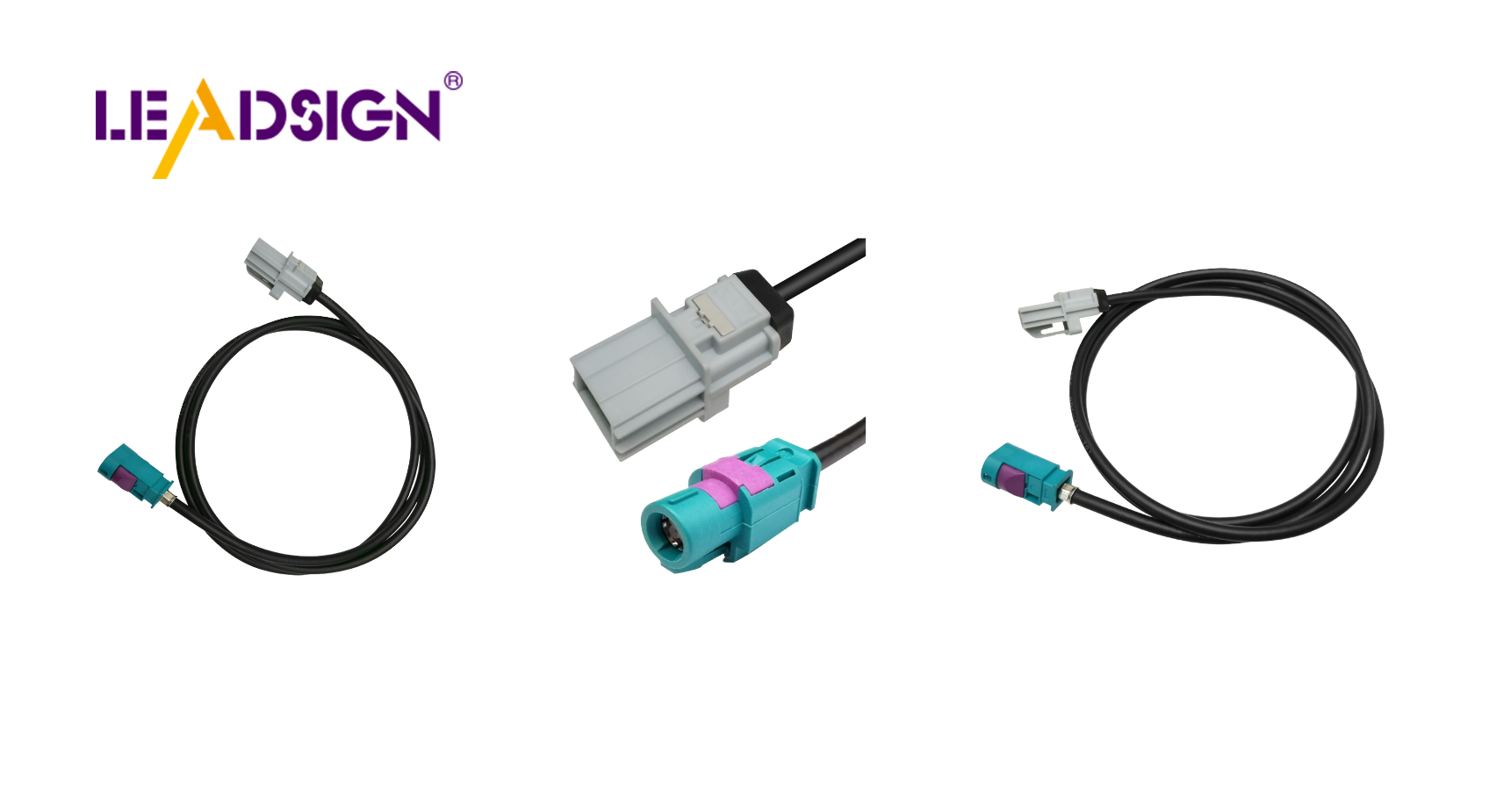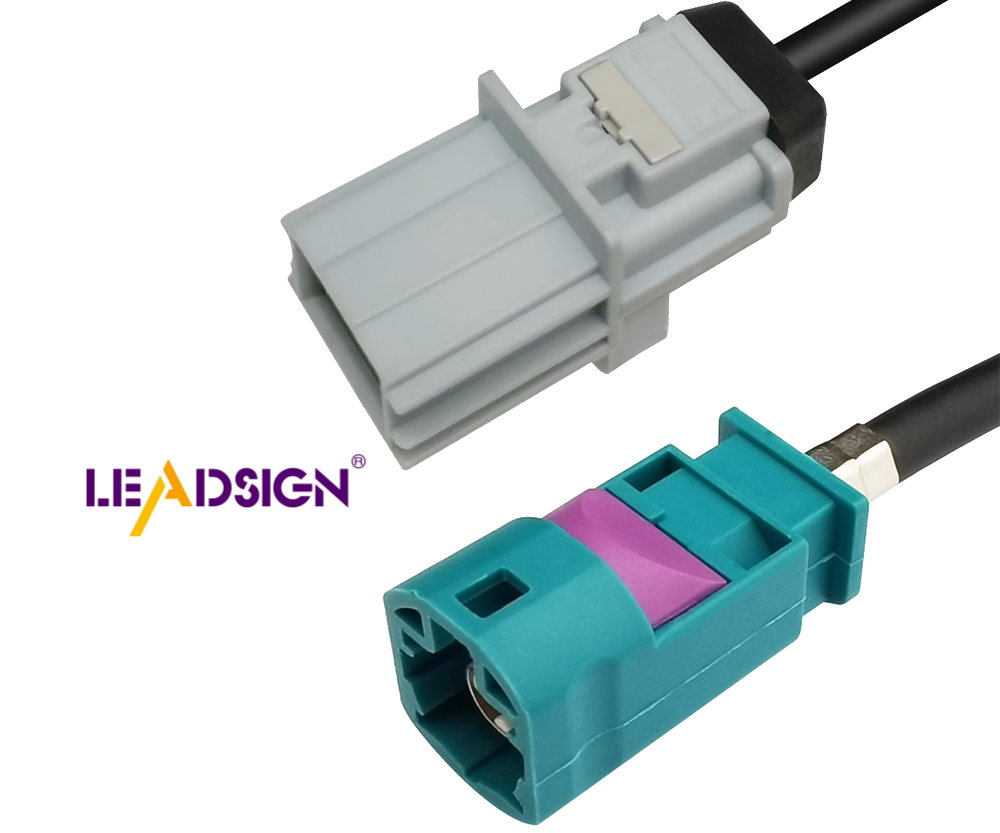Analyzing Wire Connectors for Automotive Applications

Wire connectors, also known as vehicle connectors, are important for safe car electrical connections. They keep car systems working well and safely. Bad connectors can cause big problems, like steering or brakes not working. Vehicle connectors need to handle tough conditions. They must stay waterproof and not rust for the car's life. There are many types of connectors, so choosing wisely is key. Knowing about these parts helps your car's electric system work better. This makes your car safer and perform well.
Key Takeaways
Understand the different types of vehicle connectors—crimp, solder, quick-disconnect, and HSD—to choose the right one for your car's needs.
Prioritize durability and material quality when selecting connectors to ensure they withstand harsh automotive environments.
Consider ease of installation and maintenance; connectors that require no special tools can save time and effort during repairs.
Match connectors to the specific wire types and sizes in your vehicle to prevent connectivity issues and ensure safety.
Evaluate the long-term value of connectors; investing in quality options can reduce replacement costs and enhance reliability.
Recognize the critical role of connectors in various car systems, from battery links to safety features, to maintain optimal vehicle performance.
Always prioritize safety and reliability in your connector choices to keep your car's electrical systems functioning effectively.
Types of Vehicle Connectors

Knowing the different types of vehicle connectors is key. It helps your car's electrical systems work well. Each connector has a special job and gives certain benefits.
Crimp Connectors
Description and working principle
Crimp connectors are common in cars because they are simple and work well. You use them by squeezing a metal sleeve around the wire. This makes a strong connection without needing to solder. The squeeze keeps the wire tight, ensuring a steady electrical link.
Common uses in automotive applications
In cars, crimp connectors join wires in systems like lights and audio. They are great for quick, reliable connections. Both mechanics and DIY fans like using them because they are easy to handle.
Solder Connectors
Description and working principle
Solder connectors give a lasting way to connect wires. They use melted solder to bond wires strongly. Heat Shrink Solder Connectors have tubing that shrinks with heat, sealing the link and keeping it dry.
Common uses in automotive applications
Solder connectors are used where strength matters most, like engine sensors. They seal tightly against water and shaking, perfect for tough spots.
Quick-Disconnect Connectors
Description and working principle
Quick-disconnect connectors let you easily unplug wires fast. They have two parts that snap together or apart without tools.
Common uses in automotive applications
In cars, these connectors are used where parts need regular checks or swaps, like batteries. They make fixing things quick and easy.
High-Speed Data (HSD) Connectors
High-Speed Data (HSD) connectors are very important in today's cars. They handle fast data, which is needed for smart car systems. These connectors have two locks to keep them tight. The crimp makes a strong hold, and the cable stays put. Different codes on the plastic stop mix-ups, making them reliable.
HSD connectors help send data quickly, which is key for car entertainment and screens. They keep signals clear for good video and sound. This makes them great for strong data sharing.
In cars, HSD connectors are used in many ways. They connect GPS, cameras, and displays easily. They also work with USB, Ethernet, and Firewire in cars.
These connectors last long even in tough places in cars. You can trust HSD connectors to fit well without losing signal or power. They work well with many car systems, making it easy to add them to old or new setups.
Features and Specifications
When picking vehicle connectors, think about some key things. These help them work well and last long in your car.
Key Features to Consider
Durability and material quality
Durability is very important for connectors. They should handle tough stuff like heat, wetness, and shaking. Good materials like strong metals and plastics make them last longer. Automotive connectors are made to not wear out fast, so they work well over time.
Ease of installation and maintenance
It's good if connectors are easy to put in and fix. You shouldn't need special tools to use them. This makes changing or fixing them easier. Quick-disconnect connectors are great here because you can connect or disconnect wires easily.
Technical Specifications
Current and voltage ratings
Current and voltage ratings show how much power a connector can take. Pick ones that fit your car's electric needs. For instance, high-voltage connectors handle more power safely.
Temperature and environmental resistance
Connectors must work in hot or cold places without breaking down. They also need to resist water and dust. HSD connectors do well in these conditions, making them good for cars.
Pros and Cons of Each Type
Crimp Connectors
Pros: Simple to use, no solder needed, dependable links.
Cons: Might need special crimping tools, not as strong as soldered ones.
Solder Connectors
Pros: Strong links, great for tough spots.
Cons: Needs heat to install, takes more time.
Quick-Disconnect Connectors
Pros: Quick to hook up or unhook, perfect for regular checks.
Cons: May not be as tight as other types.
High-Speed Data (HSD) Connectors
Pros: Handles fast data well, keeps signals clear.
Cons: More complex design; needs careful setup to avoid signal issues.
Picking the right vehicle connectors means knowing these features. By thinking about durability, ease of use, and technical needs, your car's electrical systems will work best.
Uses in Cars
Knowing how vehicle connectors work is important. They help keep your car safe and running well. Let’s see where they are used in cars.
Electric Parts
Battery Links
Battery links are key for a car's electric parts. They let power move from the battery to other parts. Crimp connectors are often used here because they are strong and easy to use. They hold tight even when the car shakes or gets hot, so your car starts every time.
Lights
Car lights need good connectors too. This includes headlights, taillights, and inside lights. Quick-disconnect connectors are liked because they make changing lights easy. You can swap bad lights fast without special tools, keeping you safe on the road.
Engine and Gearbox
Sensor Links
Engine sensors check how your car runs. They need strong links to work right. Solder connectors are used here as they make tough bonds. This means sensor data like oxygen levels get sent right to the engine control unit.
Control Unit Connections
Control units handle many things in cars like engine work and gear shifts. HSD connectors fit well here as they send data fast, which is needed for quick actions and decisions.
Fun and Talk Systems
Fun Systems
New cars have cool fun systems needing quick data moves. HSD connectors do great here by moving data fast for screens and sound systems, giving clear sound and pictures while driving.
Safety Parts
Safety parts like airbags need good connectors to work right in emergencies. These parts need fast data swaps to act quickly when needed, keeping everyone safe.
By knowing how vehicle connectors work in these areas, you can choose better for fixes or upgrades. Picking the right ones makes your car run better and safer.
Buying Guide
When picking car connectors, think about a few things. This guide helps you choose wisely.
Compatibility Considerations
Matching connectors to wire types and sizes
Pick the right connector for the wire type and size. Different wires, like PVC or cross-linked, have special traits. Make sure the connector fits well for a good link. A bad match can cause problems or not work at all.
Ensuring compatibility with vehicle systems
Connectors must fit your car's systems too. Each system, like body control or infotainment, needs certain connections. Knowing these needs makes sure connectors work right in your car.
Durability and Longevity
Material selection for harsh environments
Materials in connectors matter for how long they last. In tough places, they face heat, wetness, and shaking. Choose strong metals and plastics so they last long even in hard conditions.
Importance of quality assurance
Quality checks are key when picking connectors. Good ones pass strict tests to meet rules. This means they work well over time, lowering risks of breaking that could harm car safety.
Cost vs. Performance
Balancing budget with quality needs
Cost matters but balance it with quality needs too. Cheaper ones might save money now but cost more later if replaced often or fail. Quality ones give better performance and trust.
Evaluating long-term value
Think about how long connectors last and care needed over time. Good ones may cost more first but offer better value as they're durable with less upkeep needed.
By thinking about these things, you pick car connectors that boost your car’s performance and trustworthiness. Smart choices keep your car's electric parts working safely.
Choosing the right wire connectors for your car is very important. They keep your car's electric systems safe and working well. Here's a quick summary:
Types and Features: Know about different connector types like crimp, solder, quick-disconnect, and HSD. Each type has special uses and features.
Applications: Connectors are important in many car parts, from batteries to screens.
Recommendations: Always pick quality and matching connectors when buying. This helps them last long and stay safe.
Always think about safety and reliability when picking connectors. Your car works better with good ones.
See Also
Why FAKRA Connectors Matter in Automotive Systems
Understanding HSD Connectors for Automotive Use
Significance of Fakra Connectors in Automotive Design

